Why Do You Make Predictions Before Beginning to Read
Making predictions is something that proficient readers naturally do, even without knowing it. As presently as we selection up a new volume on the library or book store shelf, we are making predictions and judgments about that book based on the cover as we thumb through the book. Today, I'm sharing 3 activities for making predictions in our 10-week Reading Comprehension Strategies Series.
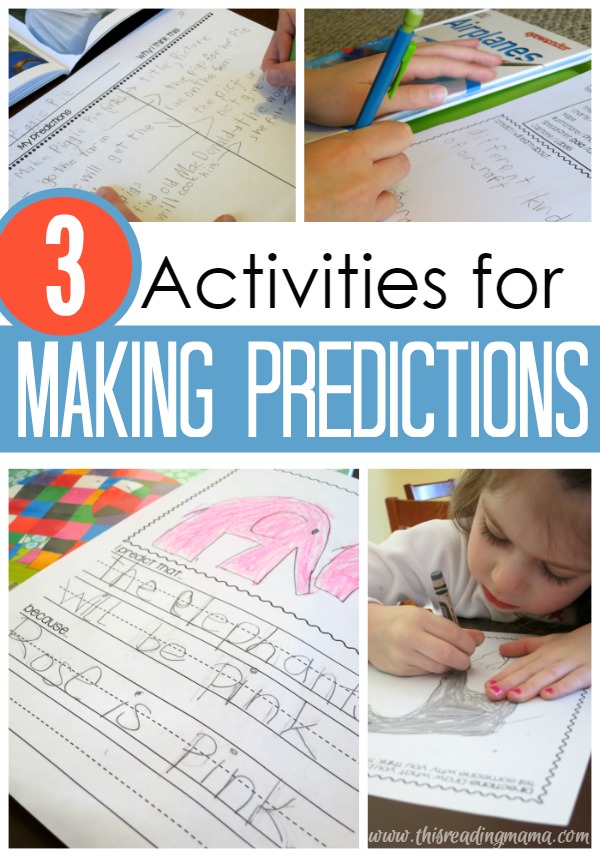
*This post contains affiliate links.
In this postal service, yous will notice iii different activities for making predictions {with a free printable pack which can be establish at the end.} We will explore making simple predictions with
1- Pre-K/K, including pre-writers,
2- making and changing predictions with older kids {2nd through 5th grades} and
3- making predictions with nonfiction text.
Hang with me here considering there'southward a lot of information!
Teaching Kids to Make Predictions
What is a prediction? Predictions are created by combining TWO things: 1- clues the author leaves for the reader, such as the words, pictures or text features and ii- what you know {your schema}.
Justifying predictions:When asking kids to make predictions {or use any other comprehension strategy}, I firmly believe information technology is of import to ask kids WHY they think that. In their answer, I'yard listening for them to connect to the text in some manner and/or to employ their schema or background knowledge.
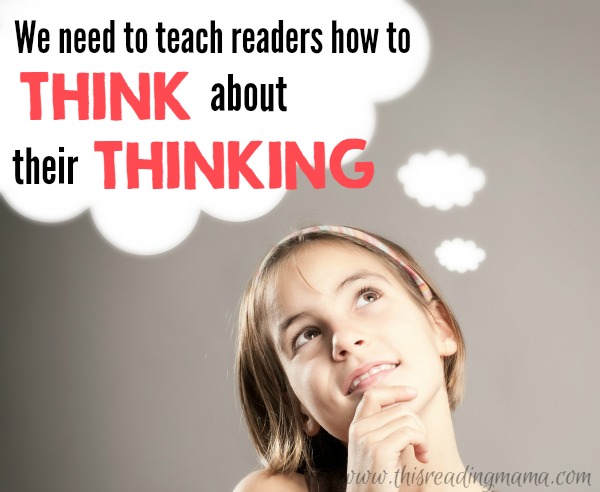
Asking readers why takes them a step deeper into the comprehension strategy and gets them thinking well-nigh their thinking {remember this term from our introduction mail: metacognition.} The printables in this pack will also inquire kids to justify their answers.
Prepping a Volume: It is of import when you desire to model a comprehension strategy that you lot look through the book alee of time and remember near how you lot desire to share your thinking and what you desire to say. I've been education comprehension for 12 years now and I nonetheless have to prep my thoughts {also known every bit a think aloud}. Doing information technology "on the wing" is never as effective every bit preparing alee of fourth dimension.
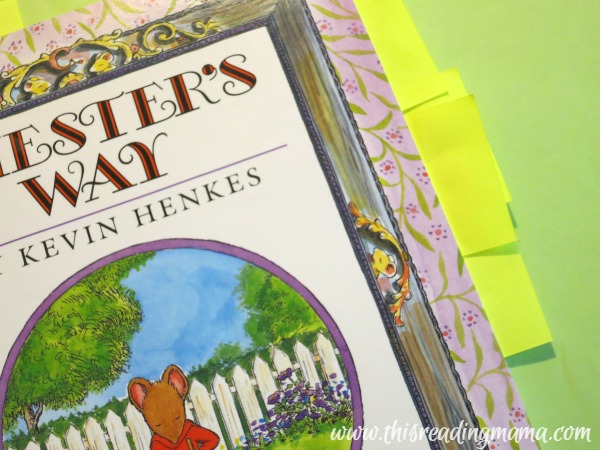
I fifty-fifty like to post gluey notes inside the book where I desire to stop and share my thoughts ahead of time. Otherwise, I'll probably forget. 🙂
Making Predictions with Immature Readers
Making predictions is a simple place for young readers to begin their comprehension journey. This tin easily be modeled and discussed as you read books together. While looking at the encompass and reading the title together, you tin share what you retrieve the book will be most; or yous can ask your child what he thinks. Before you plow the folio in certain parts of the volume, you tin say, "I recollect … volition happen adjacent considering…" or "What do you retrieve will happen next?" Fifty-fifty the youngest of readers tin can practice this.
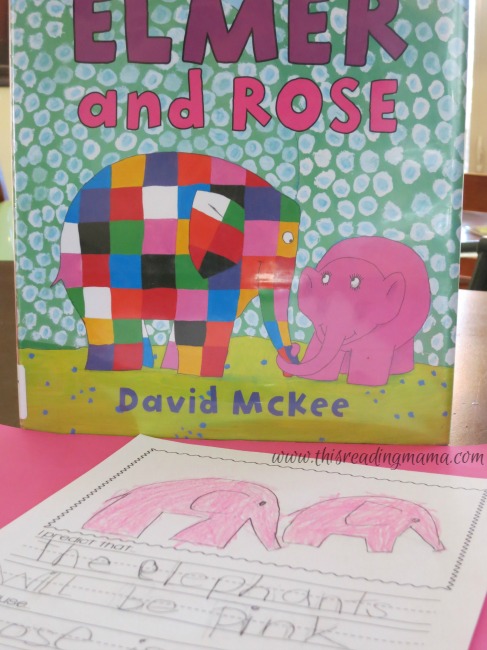
Just recently, nosotros borrowed a copy of Elmer and Rose by David McKee from the library. This was a volume nosotros had never read before {which is important for this comprehension strategy.} The story line is set upwards to proceed readers guessing as to what color Rose's herd is. I read to certain spot in the book that I had pre-planned, and then I stopped. I asked my kids to predict what they idea would happen in the text, namely what color would Rose's herd be.
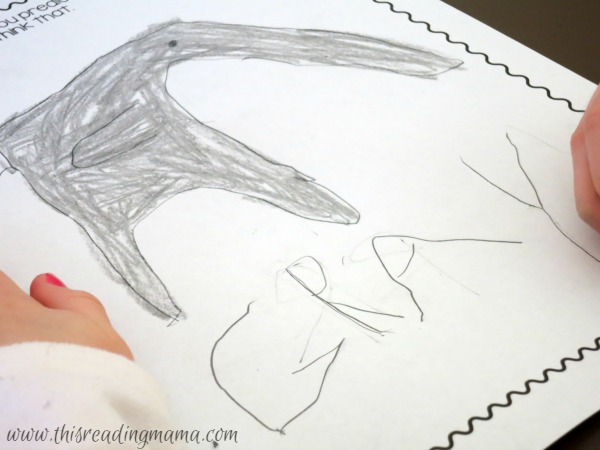
MBug {age 4} guessed Gray. When I asked her why, she said because that was the colour of Elmer's herd.
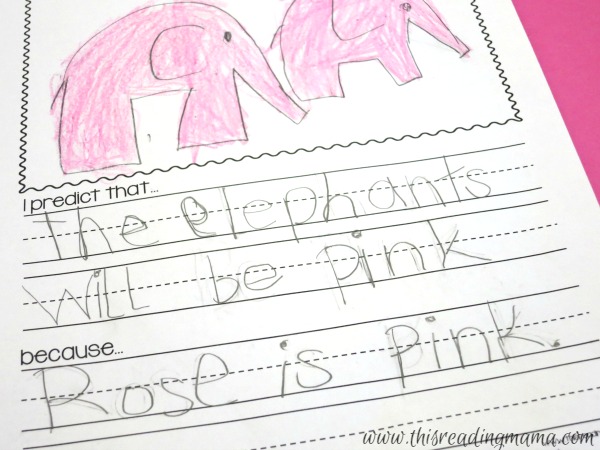
NJoy {Kindergarten} guessed pink because Rose is pinkish. When I pressed a little farther, he too mentioned that Rose said the gray elephants looked "strange", so her herd was probably not gray.
Making and Irresolute Predictions
Every bit readers grow in their understanding of making predictions, it is important to help them come across that nosotros constantly monitor our predictions, tweaking ours or making new ones entirely if necessary. This is an activity I did with my 3rd grader. While younger kids can do this besides, all the writing it requires was of no involvement to my Kindergartner.
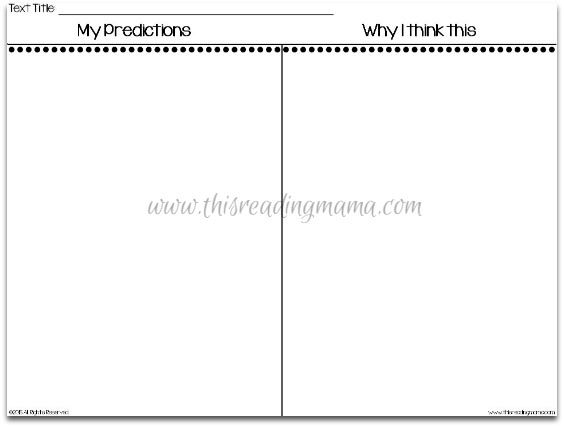
To do this, I created a T-chart. The left side of the chart asks for predictions, while right side asks for justification of the predictions. {Why did you brand that prediction?}
First, I modeled with Chester'south Way past Kevin Henkes, showing how I wanted him to call up and utilize the printable T-Chart. Past the end of the text, I was asking for his input, giving lots of support.

The next day, we used the text Piggie Pie by Margie Palatini. This fourth dimension, I released more than of the responsibility to him, but I was yet there to offer support when needed. He started with the encompass, making predictions about the book on the left side, then justifying predictions on the right side {using reasons from the book mixed with his groundwork cognition.} He did this throughout the unabridged book.
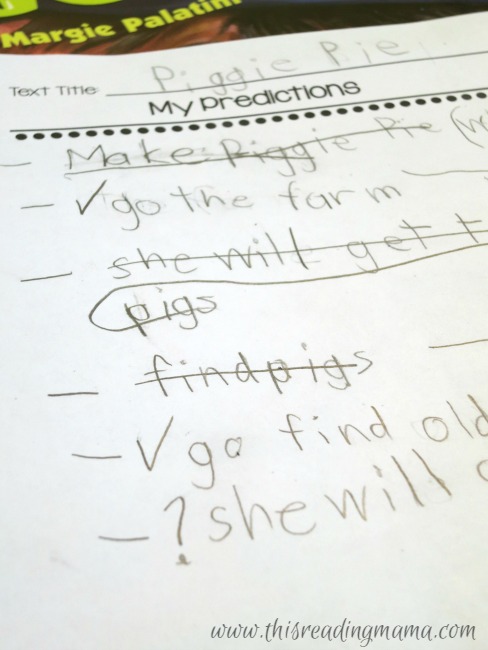
Once the book was over, we went back through his predictions on the left side of the chart. I said, "Let's go through all your predictions and ask ourselves, 'Was your prediction confirmed?'" If it was, he added a check. If information technology wasn't, he crossed it out. His terminal prediction was never confirmed, and so he included a question marker abreast that one.
Making Predictions with Nonfiction Text
Making predictions is probably paired more with fiction, but readers tin can also predict with nonfiction. Below is simple activity reader tin do before reading. As proficient readers, we automatically do this, only with younger readers, we have to make a switch to manual manner {out of automatic} so that they can "see" our thinking and hear our thoughts.
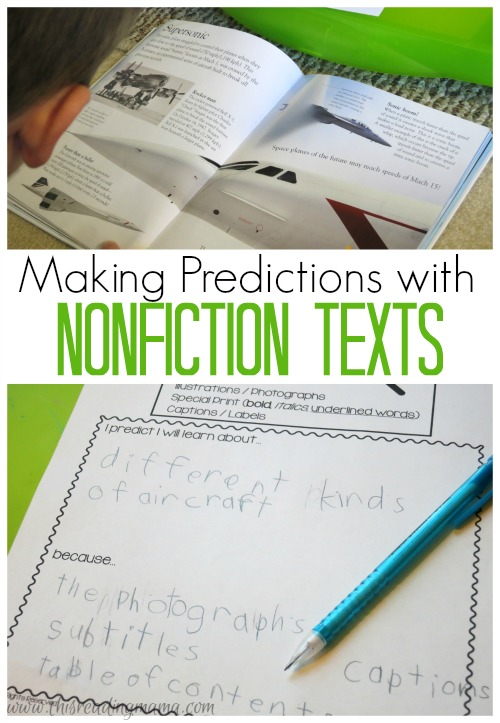
I modeled this with Hurricanes by Gail Gibbons and he did this with my help using a Discovery Kids book {like this 1}, a book he had picked out at the library. For this activity to be effective, the text needs to accept plenty of text features for the reader to utilize. While it doesn't have to have all the text features mentioned in the list on acme of the printable page, information technology needs to accept a practiced number.
Get-go, ask the reader to look through the text at the text features. {If the reader yous're teaching doesn't understand what text features are, information technology would be practiced to start there starting time. I have several resource here.} Based on what he observes with various text features from the book, inquire the reader to predict what he thinks the book will be about. Making predictions before reading with nonfiction {besides every bit fiction} is a neat activity to aid kids set up a purpose for reading.
I feel like I've only shared a load of data in ane post. And truth be told, I've but skimmed the surface of making predictions!
>>Download our Free Making Predictions Pack Hither.<<
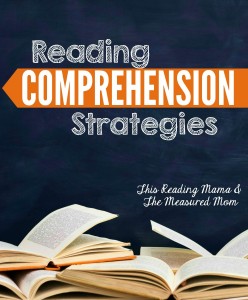
Encounter all the posts in our Reading Comprehension Strategies series.
Bask teaching,
~Becky
Source: https://thisreadingmama.com/activities-for-making-predictions/
0 Response to "Why Do You Make Predictions Before Beginning to Read"
Post a Comment